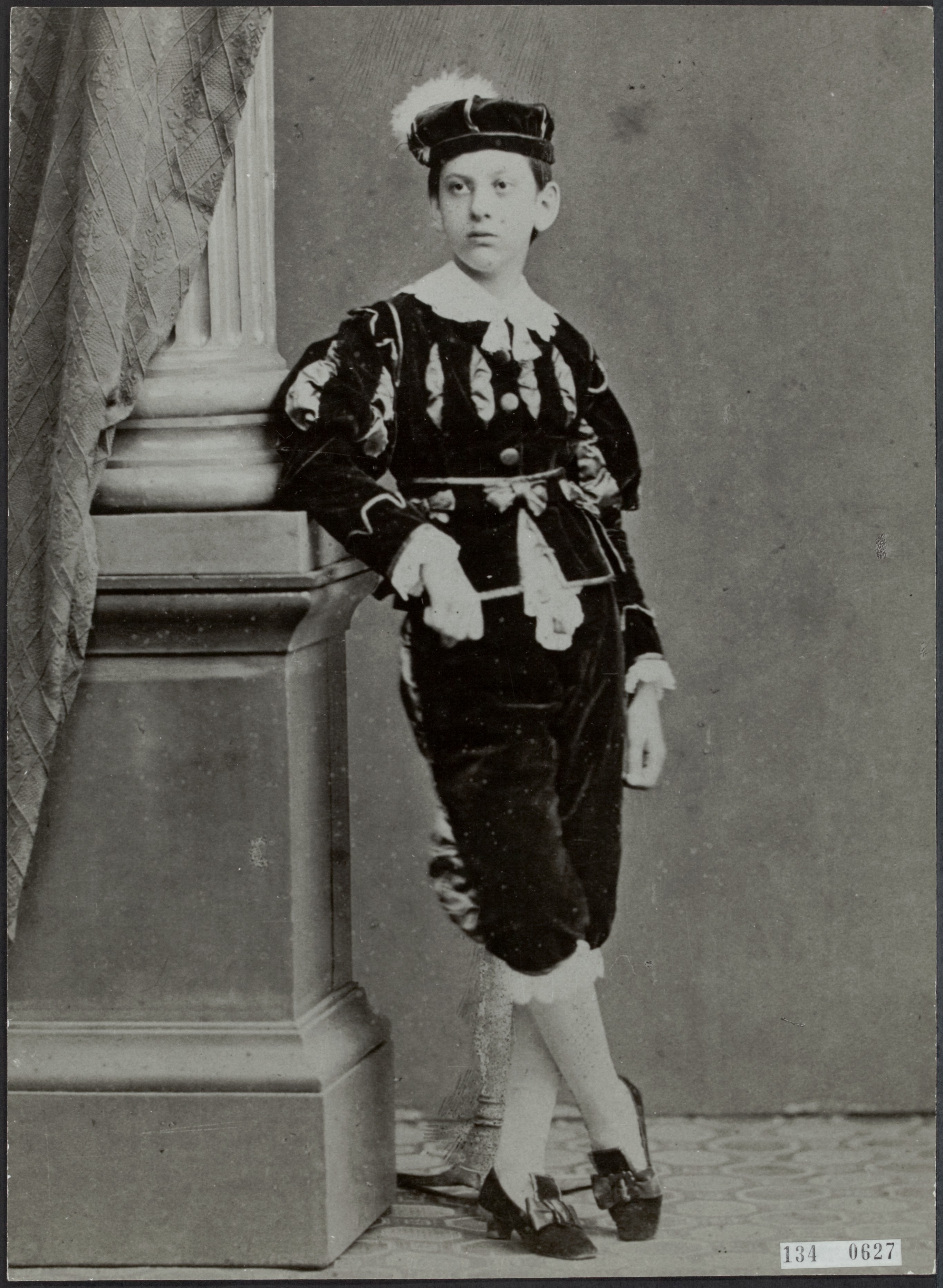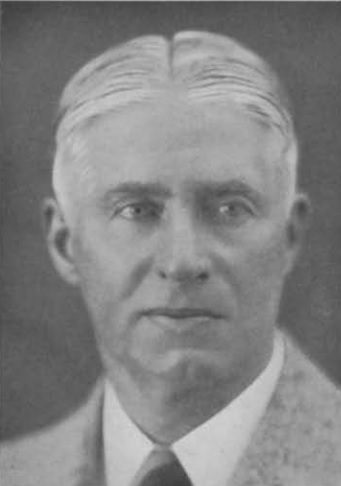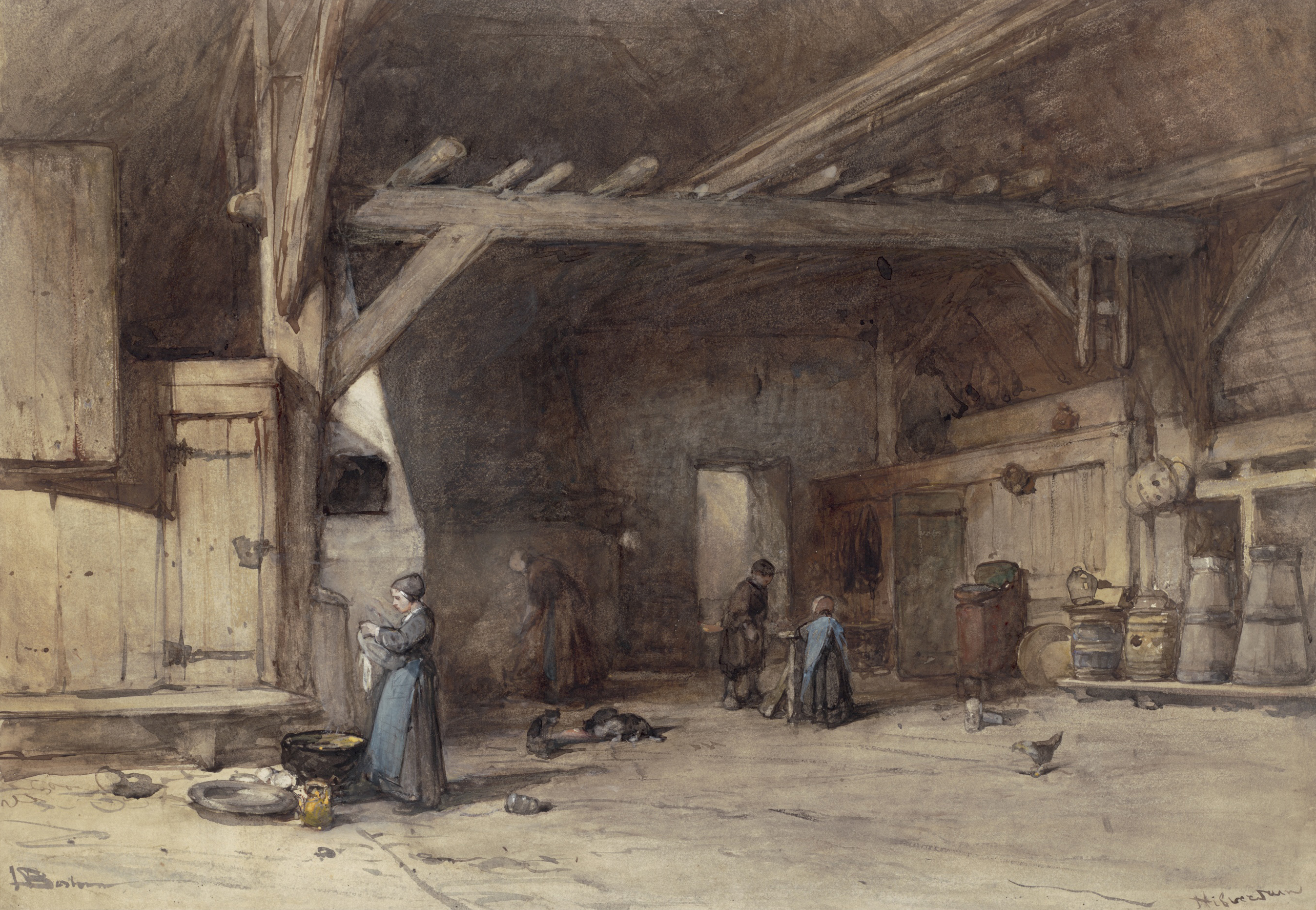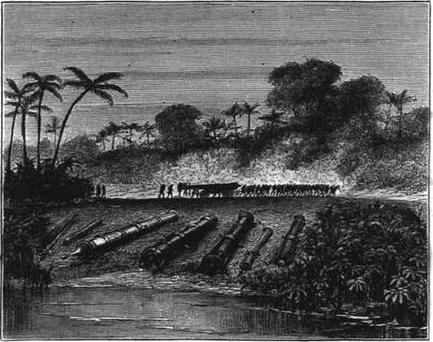|
Ecstasy. A Study Of Happiness
''Ecstasy: A Study of Happiness'' (Dutch: ''Extaze. Een boek van geluk'') is a novel written by Louis Couperus and published in 1892 by L.J. Veen in a first edition of 1,250–1,500 copies. A second edition was printed in 1894 (1,250 copies) and a third in 1905 (2,000 copies). ''Ecstasy'' was the first book of Couperus that was published by L.J. Veen, later his regular publisher. Couperus received a wage of 550 guilders for the first edition. ''Ecstasy'' was first published in the Dutch literary magazine ''The Gids''. The book was translated into English by Alexander Teixeira de Mattos in 1919 and published by Dodd, Mead and Company. Description ''Ecstasy'' Couperus dedicated ''Ecstasy: A Study of Happiness'' to happiness and suffering together. The book is a so-called psychological novel and deals with the life of widow Cecile van Erven who meets Taco Quaerts. This Taco Quaerts sees in her an exalted love while Van Erven longs for a more humane role in his life. In 1894 a tr ... [...More Info...] [...Related Items...] OR: [Wikipedia] [Google] [Baidu] |
Louis Couperus
Louis Marie-Anne Couperus (10 June 1863 – 16 July 1923) was a Dutch novelist and poet. His oeuvre contains a wide variety of genres: lyric poetry, psychological and historical novels, novellas, short stories, fairy tales, feuilletons and sketches. Couperus is considered to be one of the foremost figures in Dutch literature. In 1923, he was awarded the ''Tollensprijs'' (Tollens Prize). Couperus and his wife travelled extensively in Europe and Asia, and he later wrote several related travelogues which were published weekly. Youth Louis Marie-Anne Couperus was born on 10 June 1863 at Mauritskade 11 in The Hague, Netherlands, into a long-established, ''Indo'' family of the colonial landed gentry of the Dutch East Indies. He was the eleventh and youngest child of John Ricus Couperus (1816–1902), a prominent colonial administrator, lawyer and ''landheer'' or lord of the private domain ('' particuliere land'') of Tjikopo in Java, and Catharina Geertruida Reynst (1829–1893). T ... [...More Info...] [...Related Items...] OR: [Wikipedia] [Google] [Baidu] |
Eline Vere
''Eline Vere'' is an 1889 novel by the Dutch writer Louis Couperus. It was adapted into the 1991 film '' Eline Vere'', directed by Harry Kümel. Couperus wrote ''Eline Vere'' in the house at Surinamestraat 20, The Hague. Reception The naturalistic novel, first published in a daily newspaper (1888–1889), instantly established Couperus as a household name in the Netherlands. It has been in print ever since. In Dutch, there have been about thirty editions until 2010, two adaptations for the theatre and one for film. Composer Alexander Voormolen Alexander Nicolaas Voormolen (3 March 1895 in Rotterdam – 12 November 1980 in Leidschendam) was a Dutch composer. Education He was born as the son of Rotterdam chief of police Willem Voormolen and studied piano with Willem Petri, Willem an ... dedicated his ''Nocturne for Eline'' (1957) to the protagonist of the novel. It has been translated into English (twice), into Norwegian and into Urdu. After the publication of the transla ... [...More Info...] [...Related Items...] OR: [Wikipedia] [Google] [Baidu] |
Karel De Nerée Tot Babberich
Christophe Karel Henri (Karel) de Nerée tot Babberich (18 March 1880 – 19 October 1909) was a Dutch symbolist artist who worked in the decadent and symbolist style of Aubrey Beardsley and Jan Toorop. De Nerée was born in Zevenaar (The Netherlands) on Huize Babberich, the son of Frederick Nerée tot Babberich (1851–1882) and Constance van Houten (1858–1930). De Nerée began drawing and writing in 1898. De Nerée's literary writing and art work was very much inspired by decadent and symbolist authors such as Charles Baudelaire, Paul Verlaine or Gabriele d'Annunzio, and artists as de Feure, Goya, Johan Thorn Prikker, and Jan Toorop. He more and more focused on his art. Only posthumously, in 1916, two poems were publiced in a French periodical. In 1901, the Nerée worked in Madrid for Foreign Affairs He caught TBC, a disease that would determine his further life. In Madrid De Nerée was visited by his friend Henri van Booven, the future biographer of Louis Couperus ... [...More Info...] [...Related Items...] OR: [Wikipedia] [Google] [Baidu] |
Hendrik Petrus Berlage
Hendrik Petrus Berlage (21 February 1856 – 12 August 1934) was a Dutch architect. He is considered one of the fathers of the architecture of the Amsterdam School. Life and work Hendrik Petrus Berlage, son of Nicolaas Willem Berlage and Anna Catharina Bosscha, was born on 21 February 1856 in Amsterdam in the Netherlands. Anna Catharina Bosscha's uncle was Johannes Bosscha, a scientist who taught in Polytechnische School te Delft. Berlage studied architecture at the ETH Zurich, Zurich Institute of Technology between 1875 and 1878 after which he traveled extensively for 3 years through Europe. In the 1880s he formed a partnership in the Netherlands with Theodore Sanders which produced a mixture of practical and utopian projects. A published author, Berlage held memberships in various architectural societies including Congrès International d'Architecture Moderne, CIAM I. Berlage was influenced by the Neo-Romanesque brickwork architecture of Henry Hobson Richardson and of the ... [...More Info...] [...Related Items...] OR: [Wikipedia] [Google] [Baidu] |
Frederik Van Eeden
Frederik Willem van Eeden (3 April 1860, Haarlem – 16 June 1932, Bussum) was a late 19th-century and early 20th-century Dutch writer and psychiatrist. He was a leading member of the Tachtigers and the Significs Group, and had top billing among the editors of '' De Nieuwe Gids'' (''The New Guide'') during its celebrated first few years of publication, starting in 1885. Biography Van Eeden was the son of Frederik Willem Van Eeden, director of the Royal Tropical Institute in Haarlem. In 1880 he studied Medicine in Amsterdam, where he pursued a bohemian lifestyle and wrote poetry. Whilst living in the city, he coined the term lucid dream in the sense of mental clarity, a term that nowadays is a classic term in the Dream literature and study, meaning dreaming while knowing that one is dreaming. In his early writings, he was strongly influenced by Hindu ideas of selfhood, by Boehme's mysticism, and by Fechner's panpsychism. He went on to become a prolific writer, produci ... [...More Info...] [...Related Items...] OR: [Wikipedia] [Google] [Baidu] |
Jan Veth
Jan Pieter Veth (18 May 1864, Dordrecht – 1 July 1925, Amsterdam) was a Dutch painter, poet, art critic and university lecturer. He is especially noted as a portrait painter. Amongst his sitters were Max Liebermann, Lambertus Zijl, Frank van der Goes, Antoon Derkinderen and other contemporaries including various fellow painters. Biography Jan Veth was the son of Gerradus Huibert Veth, a Dordrecht iron merchant and liberal politician, and Anna Cornelia Giltay. On his mother's side he descended from the Dordrecht painter family of Van Strij (his mother was a granddaughter of Jacob van Strij). He married Anna Dorothea Dirks on 10 August 1888, from which marriage came five children. Veth received his art education at the ''Rijksakademie van Beeldende Kunsten'' in Amsterdam. He was living in the area, called de Pijp. With several of his fellow students he founded the St. Luke group. From 1885 he worked with the painter Anton Mauve in Laren. After his marriage he settled in Bus ... [...More Info...] [...Related Items...] OR: [Wikipedia] [Google] [Baidu] |
Surinamestraat 20, The Hague
Surinamestraat 20 in The Hague is the location of the house where the Dutch writer Louis Couperus wrote his novel ''Eline Vere''. The father of Couperus, John Ricus Couperus (1816-1902) gave orders to build this house; he first sold his estate "Tjicoppo", which was located near Buitenzorg in the Dutch East Indies and then returned to the Netherlands, where he and his family moved into this house. John Ricus Couperus lived here until his death in 1902 and then the house was put up for sale. History The Couperus family started living in this house in 1884 and between 1887 and 1888 this was the place where Louis Couperus wrote his novel Eline Vere. After the death of John Ricus Couperus the house was put up for sale and in 1903 bought by lawyer and writer Conrad Theodor van Deventer. He died in 1915 but his widow lived in the house until 1927, when the house was sold to the Egyptian embassy. From this date until August 2009 the house remained in use as such, when it was put up fo ... [...More Info...] [...Related Items...] OR: [Wikipedia] [Google] [Baidu] |
John Ricus Couperus
John Ricus Couperus (1816 – 1902) was a Dutch lawyer, member of the Council of Justice in Padang, member of the High Military Court of the Dutch East Indies and the ''landheer'' of Tjikopo. He was also the father of the Dutch writer Louis Couperus and knight in the Order of the Netherlands Lion.'J.R. Couperus died' in the '''', October 14, 1902 – retrieved 31 January 2013 Biography Youth Born into the '''' landed gentry of the Indies on both sides of his family, Couperus ...[...More Info...] [...Related Items...] OR: [Wikipedia] [Google] [Baidu] |
Henri Van Booven
Hendrik Cornelis Alexander (Henri) van Booven (17 July 1877 in Haarlem – 31 January 1964 in The Hague) was a Dutch writer and journalist. His most successful work was the novel ''Tropenwee'' (''Tropical agony'', 1904), a thinly veiled autobiographical literary report of a mission to Congo in 1898, somewhat similar to ''Heart of Darkness''. Friend of the symbolist artist Karel de Nerée tot Babberich and the writer Louis Couperus, whose biography he would write (''Leven en werken van Louis Couperus'', 1933), he was also an important sportsman, especially in rugby, cricket Cricket is a bat-and-ball game played between two teams of eleven players on a field at the centre of which is a pitch with a wicket at each end, each comprising two bails balanced on three stumps. The batting side scores runs by striki ..., and hockey. Works (selection) * Witte Nachten (1901) ('White Nights') * Tropenwee (1904) * Van de Vereering des Levens (1906) * Sproken (1907) * De Fra ... [...More Info...] [...Related Items...] OR: [Wikipedia] [Google] [Baidu] |
Hilversum
Hilversum () is a city and municipality in the province of North Holland, Netherlands. Located in the heart of the Gooi, it is the largest urban centre in that area. It is surrounded by heathland, woods, meadows, lakes, and smaller towns. Hilversum is part of the Randstad, one of the largest conurbations in Europe, and the Amsterdam metropolitan area; it is about 22 km from the centre of Amsterdam and about 15 km from the city of Utrecht. The city is home to the headquarters, studios, and broadcast stations of several major radio, television, and newspaper companies, such as the NOS. This means that Hilversum is known for being the ''mediastad'' (media city) of the Netherlands. Town Hilversum lies south-east of Amsterdam and north of Utrecht. The town is known for its architecturally important Town Hall (Raadhuis Hilversum), designed by Willem Marinus Dudok and built in 1931. Hilversum has one public library, two swimming pools (Van Hellemond Sport and De Lieberg), a numbe ... [...More Info...] [...Related Items...] OR: [Wikipedia] [Google] [Baidu] |
Elisabeth Couperus-Baud
Elisabeth Wilhelmina Johanna (Betty) Couperus-Baud ( Batavia, 30 October 1867 – The Hague, 18 March 1960), was a Dutch translator. She was the wife of the Dutch writer Louis Couperus (1863–1923). Biography Couperus-Baud was the daughter of Jan Carel Willem Ricus Theodore Baud (1838–1883), an assistant resident at Meester Cornelis (Dutch East Indies) and his cousin Johanna Wilhelmina Petronella Steenstra Toussaint (1844–1927). In 1890 she published, in the Dutch magazine "Nederland", a short story called ''Een galavoorstelling''.'Liefde van alleen de ziel' , in NRC.nl She married in 1891 her cousin, Louis Couperus, son of John Ricus Couperus (1816–1902) and jkvr. Catharina Geertruida Reynst (1829� ... [...More Info...] [...Related Items...] OR: [Wikipedia] [Google] [Baidu] |
Aceh War
The Aceh War ( id, Perang Aceh), also known as the Dutch War or the Infidel War (1873–1913), was an armed military conflict between the Sultanate of Aceh and the Kingdom of the Netherlands which was triggered by discussions between representatives of Aceh and the United States in Singapore during early 1873.Ricklefs (2001), p. 185–88 The war was part of a series of conflicts in the late 19th century that consolidated Dutch rule over modern-day Indonesia. The campaign drew controversy in the Netherlands as photographs and accounts of the death toll were reported. Isolated bloody insurgencies continued as late as 1914 and less violent forms of Acehnese resistance continued to persist until World War II and the Japanese occupation. Background For much of the 19th century, Aceh's independence had been guaranteed by the Anglo-Dutch Treaty of 1824 and its status as a protectorate of the Ottoman Empire since the 16th century. During the 1820s, Aceh became a regional political a ... [...More Info...] [...Related Items...] OR: [Wikipedia] [Google] [Baidu] |









